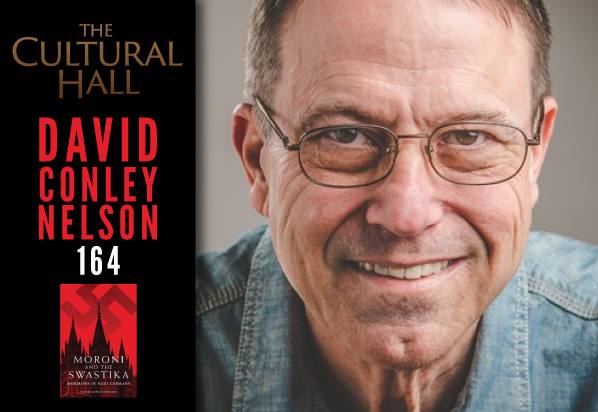
Moroni and the Swastika: Mormons in Nazi Germany
Adolf Hitler’s Nazi government shut down forty-two small German religious sects. An American denomination, however, the Church of Jesus Christ of Latter-day Saints, escaped oppression under National Socialism. Unlike persecuted Jews and Jehovah’s Witnesses, and other small faiths that suffered severe restrictions, almost fourteen thousand Mormons worshiped without undue hindrance. Mormon leaders resurrected a doctrinal edict requiring deference to civil authority, which the Latter-day Saints had not always obeyed at home or abroad. With a few notable exceptions, Mormons obeyed Hitler’s law and were treated as ordinary Germans. But survival was not enough: Mormons found opportunity under the Third Reich.
Under pre-war American mission presidents, the Mormons pursued avenues of commonality with the Nazi state. They emphasized their interest in genealogy, sports and large families, sent husbands into the Wehrmacht and sons into the Hitler Youth, and prayed for a German victory when the war began. They purged Jewish references from hymnals, lesson plans and liturgical practices, and in a few cases shunned Jewish converts. The wife of an American mission president rode with Hitler in the Führer’s limousine on the way to Nazi youth rallies. Another American mission president wrote an article for the official Nazi Party daily newspaper, extolling parallels between Utah Mormon and German Nazi society.
Mormons later tried to forget their approach to the government of the Third Reich, especially when large numbers of Germans immigrated to Utah after the war. When the story of a martyred teenaged Mormon resister, Helmuth Hübener, emerged in the 1970s, church officials hindered the research of scholars at Brigham Young University and forbade subsequent performances of a popular commemorative on-campus stage play. Leaders feared that Hübener’s example would incite Mormon youth to rebel against dictators abroad, hurt the church’s relations with communist East Germany, and offend German immigrants in Utah. In recent years, Hübener—excommunicated for rebellion against the Nazis but later restored to full church membership—has been rehabilitated as a recognized hero of Mormonism. Buttressed by recent books and videos, a new collective memory has arisen–one of wartime courage and suffering by ordinary German Mormons. The inconvenient past is being conveniently discarded, and an alternate narrative has been written.
David Conley Nelson received his Ph.D. in history from Texas A&M University in 2012. He earned bachelor’s degrees in journalism from the University of Oregon and French from the University of Houston. He served six years as an officer in the United States Marine Corps. In graduate school, David studied Nazi Germany and the Holocaust, and then began investigating the relationship between small religious denominations and totalitarian governments. His secondary research interest, the Church of Jesus Christ of Latter-day Saints (the Mormons), combined with his curiosity about collective memory, that is, how groups and even whole societies choose to remember their past. That prompted a presentation at the year 2000 session of the Mormon History Association, which won the Juanita Brooks award for the best graduate student paper. A doctoral dissertation followed more than a decade later, and subsequently a contract to publish Moroni and the Swastika: Mormons in Nazi Germany, from the University of Oklahoma Press in the spring of 2015. When not researching and writing history, David travels the world as an airline captain. He lives with his wife and three children in College Station, Texas, and is a passionate fan of the Texas A&M Aggies and the Oregon Ducks.
Podcast: Play in new window | Download
Subscribe: RSS

